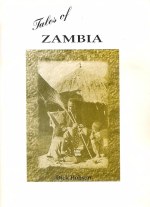
Do you know the link between Kapenta and the Copperbelt province of Zambia? Kapenta is a popular small, silvery fresh water lake fish. It is also a name with an interesting history.
The name Kapenta was coined by miners on the Copperbelt to describe two closely related species of Lake Tanganyika fresh water fish – a sardine and a sprat (Scientific names: Limnothrissa miodon and Stolothrissa tanganicae). Since the increase in mining activity on the Copperbelt from the 1930s onwards, increasing numbers of people migrated from the rural areas into the towns. This increased the need for food supplies.
Sun dried Kapenta had a long shelf life and was lighter and easier to transport over long distances. Large quantities therefore found their way to Kitwe and other Zambian towns from Lake Tanganyika.
Kapenta was a tasty, affordable high protein dish that was easy to prepare quickly. This made it popular among young miners’ wives and girlfriends who spent more time at local pubs (known as taverns) than in the kitchen preparing family meals.
In the sixties and seventies, miners early shifts ended at 15.00hrs. A siren would sound at SOB shaft in Wusakile west. You could hear it all over Wusakile and as far as Chamboli and Ndeke townships. This gave these wives enough time to dash home and have the Nshima and Kapenta ready for their man.
A lot of people were recent arrivals on the Copperbelt from their villages and had conservative traditional values. They frowned on such women who frequented taverns, shared Chibuku drinks or Castle Lager with strange men and felt no shame dancing to the blaring Rhumba music.
Some of these town women also applied lipstick and applied glycerine to their arms and legs to make the skin look smooth and shiny. (It was rumoured that when they had spent all their money on drink and couldn’t afford glycerine, these women improvised by dissolving sugar in water to make a sticky liquid that had the same cosmetic effect). They were referred to as “Kapenta milomo” – “She who paints her lips.”
With time, the Lake Tanganyika sardine thus came to be popularly known as “Kapenta” and a perfectly good dish thus acquired a negative association with “ba Kapenta milomo.” This bias still lingers on, with many people wrongly associating Kapenta with a poor man’s diet. Could this be the reason it is rarely found on restaurant and hotel menus?
Kapenta was originally only found in the Rift Valley lakes (Rwanda, Congo DRG, Tanzania and Zambia). It was introduced into the Zambezi River initially in 1959 on completion of Lake Kariba and in the 1970s into the new Cahora Bassa dam. This has made it easily available in Zimbabwe (where it is known as Matemba in Shona) and in Mozambique.
Kapenta is available dried or fresh frozen. There are different ways of preparing it. It can be shallow fried with onions and tomatoes, stewed, marinated, coated, boiled or cooked in peanut butter.
Next time you enjoy a Kapenta dish, remember its chequered history.
__________
Do you have a story about your favourite dish? Share it with us.
_________
You can also read more about Kapenta and other Zambian tales in “Tales of Zambia” by Dick Hobson (1996) available from the Zambia Society Trust.

_______


